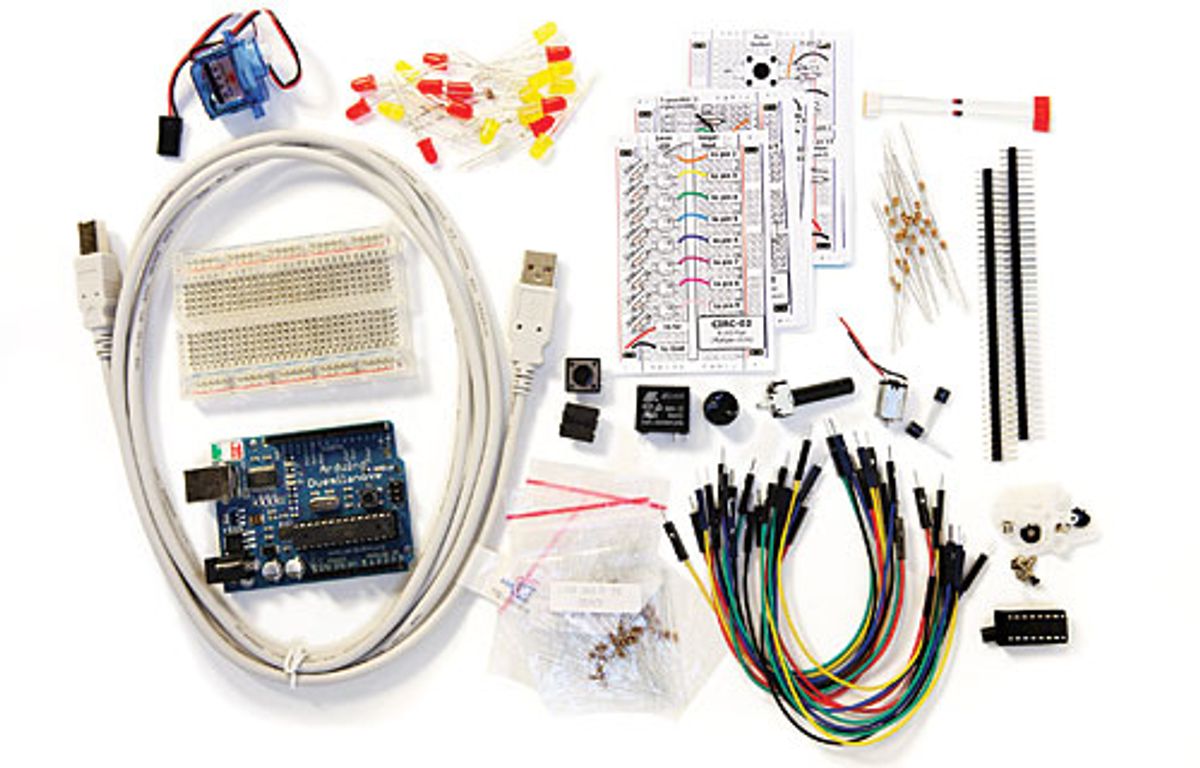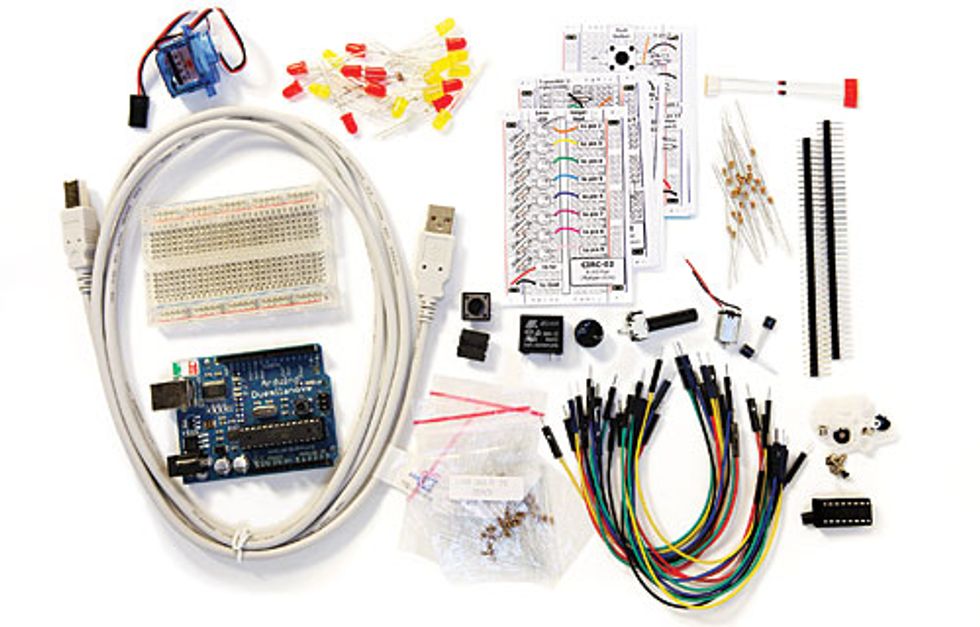US $85; https://www.sparkfun.com. Click on the image to enlarge.
List price: US $155; https://www.elenco.com/snapcircuits.html. Click on the image to enlarge.
This is part of IEEE Spectrum's 2010 Holiday Gift Guide.
There's no better way to encourage a kid's inclination toward electronics than with a holiday gift. The trick, of course, is finding something that's fun as well as educational.
Catering to the younger crowd—those who shouldn't yet wield a soldering iron, for example—is perhaps the most difficult. But they can safely and enjoyably learn about the many things electrons can do with a set from Elenco Electronics. The Snap Circuits Jr. 100-in-1 kit, just US $21 from Amazon, cleverly avoids soldering; its nicely mounted and labeled components can be placed on a plastic grid. Your budding EE then hooks them together by merely snapping in place wire jumpers or rigid connector bars.
The Snap Circuits Jr. kit is appropriate for children in elementary school, but a bright youngster will soon exhaust its educational potential. Fortunately, the more advanced kits allow for much more experimentation. The Snap Circuits SC-500 Student Training Program, for example, provides three times the fun and includes teacher and student guides, along with a sturdy carrying case. All this can be had for about $140 from Amazon.
By Charles Platt; Make, 2009; 352 pp.; list price: US $35; ISBN: 978-0-5961-5374-8
For a capable middle or high school student, an excellent gift would be Make: Electronics (Make, 2009), a remarkably comprehensive handbook for the novice electronic hobbyist, available for about $25. The author, Charles Platt, shows a good sense of humor and stresses hands-on tinkering over plodding book learning as he painlessly guides the reader.
The tutorial begins at a low level—with alligator clips to attach wires together—but rapidly works its way up to prototyping circuits using breadboards and finally soldering components to perforated boards. I commend Platt for the wealth of detail he provides. Having more description than necessary in a reference like this is far better than having too little. He still manages to cover quite a bit of territory, including the basics of most common electronic components, both analog and digital, along with DC, stepper, and servo motors.
Although I have some minor quibbles with the book—it relegates wire wrap to a sidebar, misses a key trick when it describes how to solder, and lacks any discussion at all of operational amplifiers, to name a few—it's still a great guide for teens wanting to get their hands dirty building real electronic projects.
But I also have one larger quibble. This guide includes a very brief introduction to a simple microcontroller, the Picaxe. The author acknowledges that others, in particular the ever-popular Arduino, are far more capable. Yet, he chooses not to cover the Arduino because it requires "programming in the C language." In truth, the Arduino uses a variant of C and is really quite user friendly.
To be sure, most of the information needed to program an Arduino is available online. But if you want to make the process really painless for a budding engineer, buy him or her an Arduino Inventor's Kit, available for $85 from Sparkfun Electronics. It includes an Arduino Duemilanove board, along with a prototyping breadboard and the components needed to work through the dozen or so simple exercises described in the accompanying guide. The guide is online at the kit's manufacturer's site, Oomlout, which also provides video tutorials. With all that support, it's hard to imagine a youngster running into roadblocks.
For the next step in your young engineer's education, you might consider the DSO Nano, a pocket oscilloscope from Seeed Technology. This featherweight digital 'scope is cleverly built into a case that was surely designed for an MP3 player. At $89 and with just one input channel, don't expect it to replace your trusty Tektronix. But the Nano is capable enough for simple tasks—examining a serial communication line or the pulse-width modulated signal sent to a servo motor, for example. Years from now, your engineer scion will probably remember the Nano as the most unusual stocking stuffer of his or her childhood.
Prices are those paid at press time. Current prices may vary.
This article originally appeared in print as "The Gift of Gadgetry."




